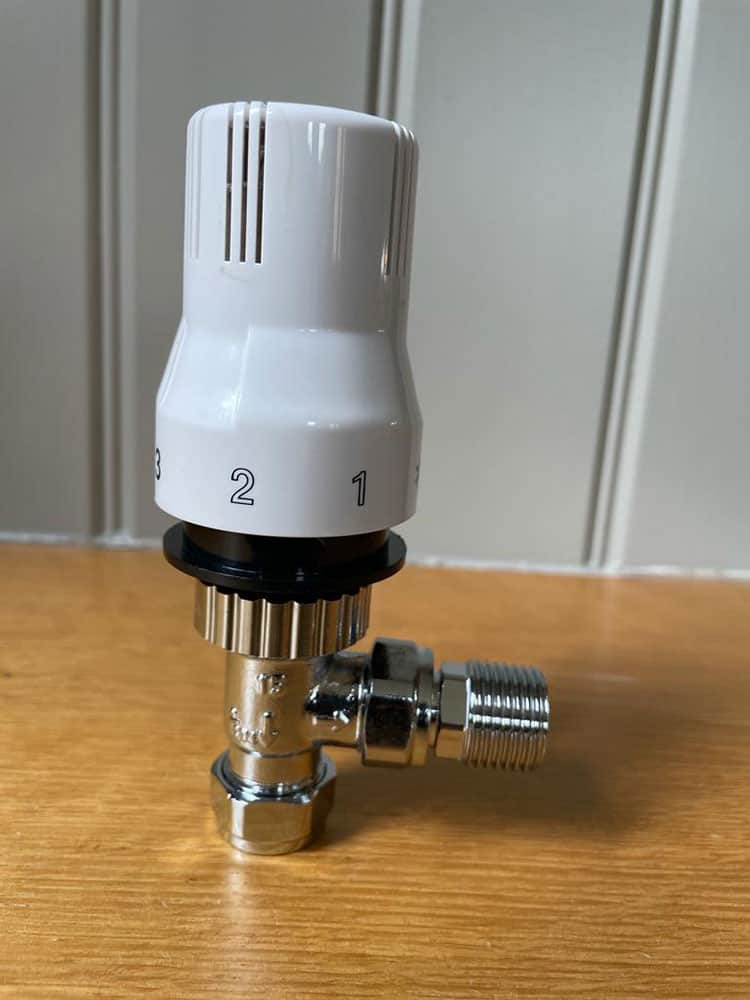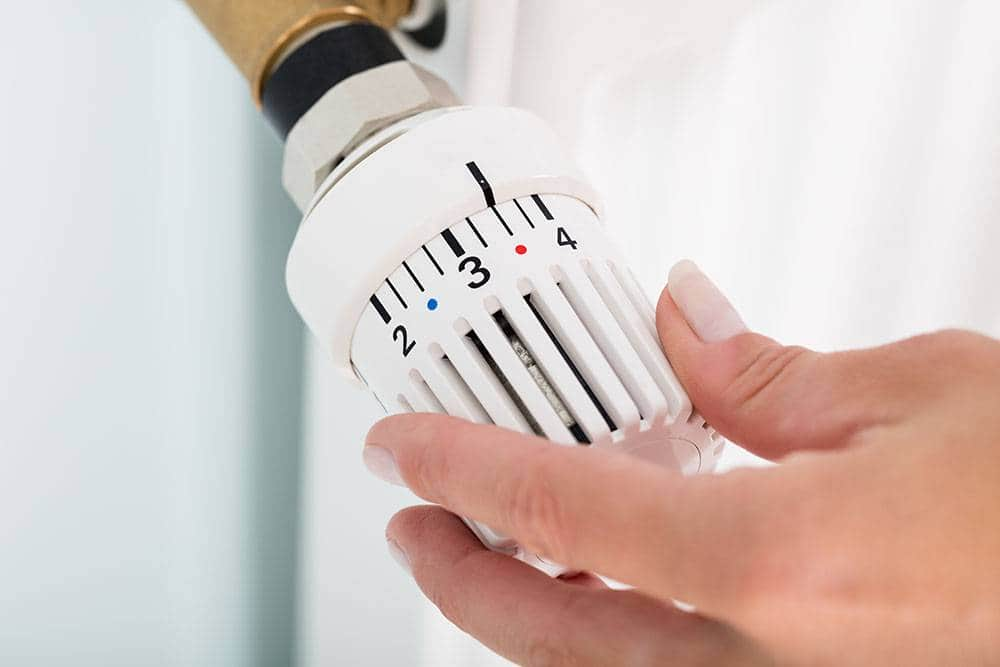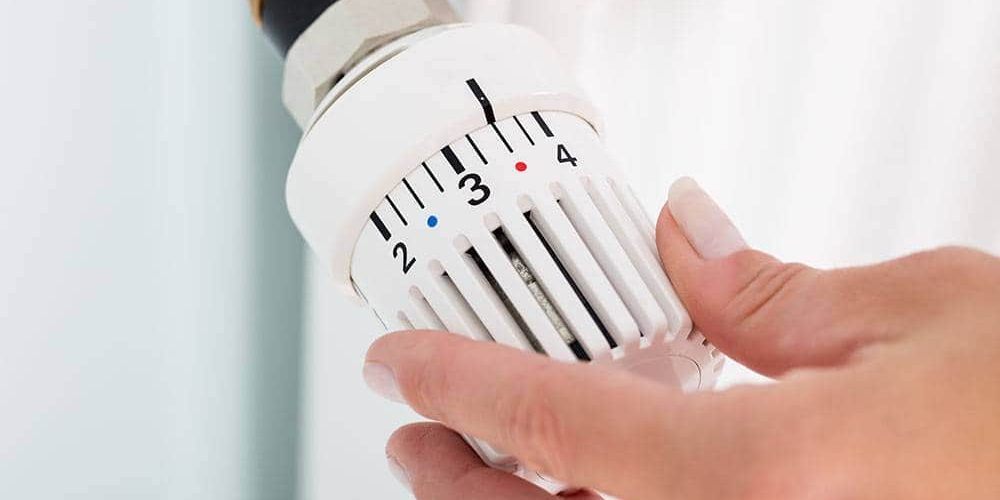A thermostatic radiator valve (TRV) is one of the simplest yet most effective upgrades you can make to your heating system. It allows you to control the temperature of individual radiators, improving comfort and helping to reduce energy bills. Whether you are managing a single flat or a large property in London, TRVs provide a cost-effective way to optimise heating and reduce energy waste.
If you're looking for expert advice on choosing and installing TRVs, Maintracts Services is here to help. Call us on 02086822244 or email info@maintracts.co.uk for professional heating services in London. You can also learn about related temperature control options in our guide on why you need a thermostatic shower.
At Maintracts Services, we don't just fit heating controls — we design energy-efficient solutions tailored to your comfort and lifestyle.

How Do Thermostatic Radiator Valves Work
A TRV is a heat regulation device fitted to a radiator's inlet. Inside, a temperature-sensitive capsule (wax or liquid) expands and contracts depending on the room's temperature. As the capsule moves, it adjusts a small pin that opens or closes the water flow into the radiator.
When the room reaches your chosen temperature, the TRV automatically reduces the hot water supply, preventing overheating and wasted energy. When the temperature drops, the valve reopens to allow more heat in.
TRVs work alongside your central room thermostat. While the thermostat manages the overall heating cycle of your boiler, the TRV fine-tunes the temperature in each room, a method known as heating zone management. This combination ensures your home stays comfortable and energy-efficient.
Benefits Of Installing TRVs In Your Home
1. Energy-Efficient Heating Control
TRVs automatically adjust radiator flow to maintain your desired temperature. This prevents unnecessary heating in rooms you're not using, reducing the workload on your boiler and lowering energy bills.
2. Personalised Room Comfort
Different rooms often need different temperatures. Bedrooms may be kept cooler for better sleep, while living areas stay warm. With TRVs, you can easily customise each room's settings.
3. Reduced Wear On Heating Systems
By avoiding constant high demand on your boiler, TRVs help reduce system strain. This can lower the risk of breakdowns and extend the life of your heating equipment.
4. Better Than Manual Radiator Valves
Unlike manual valves, which require frequent adjustment and cannot regulate temperature automatically, TRVs respond instantly to room conditions. This means less effort for you, improved comfort, and more consistent warmth, especially in properties aiming for energy-efficient heating.
5. Compatibility With Smart Heating Systems
TRVs can be upgraded to smart radiator valves, which allow you to program heating schedules, control settings via an app, and integrate with other smart home systems for complete home heating optimisation.
6. Ideal For Multi-Zone Heating
Large homes, shared houses, or buildings with varying room usage benefit greatly from TRVs. You can heat only the rooms in use while saving energy elsewhere.
7. Simple To Use
Even without smart controls, TRVs have an easy-to-read numbered dial. Turning it clockwise increases the temperature setting, and anticlockwise lowers it — making adjustments quick and intuitive.

Key Difference Between A Thermostatic And Normal Radiator Valve
Maintracts Services Director, Oliver Osmore, explains the key difference:
"When we talk about radiator valves, think of regular ones, the simple on/off type, like a basic volume knob on your stereo. They're straightforward and get the job done.
A Thermostatic Radiator Valve (TRV) is more like upgrading to an innovative sound system. Instead of just switching on and off, it fine-tunes the heat based on the room's temperature. You set your preferred warmth, and the TRV adjusts automatically, like having a mini thermostat on every radiator. It's all about precision and tailored comfort for each room."
Key differences between TRVs and standard radiator valves
| Feature | TRV | Normal radiator valve |
|---|---|---|
| Temperature control | Allows individual temperature settings for each room, adjusting heat output automatically. | Basic on/off control without precise temperature adjustment. |
| Energy efficiency | Prevents overheating by reducing heat when a room reaches the set temperature, saving energy. | May lead to wasted energy due to a lack of fine-tuning. |
| Zoning | Enables different heating zones for customised comfort in each area. | Provides uniform heating without zone control. |
| Automatic adjustment | Responds to room temperature changes automatically. | Requires manual adjustment to control heat. |
| Comfort and personalisation | Offers tailored heating for each room's needs. | Limited to basic heating control. |
| Temperature sensing | Contains a temperature-sensitive element for real-time adjustments. | No temperature sensing — relies on manual operation. |
In short, a TRV provides greater control, improved energy efficiency, and more personalised comfort than a standard radiator valve. They are especially effective when paired with a well-balanced, correctly sized heating system.
Troubleshooting Common TRV Problems
While TRVs are generally low-maintenance, issues can sometimes occur. Our guide on common problems with thermostatic radiator valves and how to fix them offers detailed steps, but here's an overview of typical faults:
1. Stuck Valve Pin
If your radiator remains cold despite the TRV being open, the pin inside may be stuck. This can happen after long periods without adjustment. Gently pressing and releasing the pin can help free it.
2. Air Trapped In The Radiator
Uneven heating across a radiator often indicates trapped air. Bleeding the radiator restores full efficiency and ensures your TRV can work effectively.
3. Incorrect Temperature Settings
If the TRV is set too low, the radiator may not heat sufficiently. Adjust gradually to find the right comfort level for each room.
4. Sensor Blockage
Curtains or furniture placed over the TRV can block its temperature sensor, causing inaccurate readings. Always keep it exposed for accurate operation.
5. Sensor Failure
In rare cases, the TRV's sensor capsule may fail. This will require replacing the valve to restore proper function.
Set Up Efficient Heating With Maintracts Services
A well-chosen and properly installed thermostatic radiator valve can significantly improve your heating efficiency, comfort, and control. At Maintracts Services, we've been helping London homeowners achieve optimal heating performance since 1974.
Our local Gas Safe registered engineers are available 24/7 for TRV installation, boiler servicing, and complete heating system upgrades. We take care of everything from the initial consultation to the final test, ensuring your system runs at peak efficiency.
Call us today on 02086822244 or email info@maintracts.co.uk to book your TRV installation and enjoy a warmer, more efficient home.
FAQs
What is the purpose of a thermostatic radiator valve?
It controls the flow of hot water into a radiator, adjusting automatically to maintain your chosen room temperature.
Are TRVs worth installing in every room?
Yes, except where your central thermostat is located, as this could cause conflicting temperature control.
Can you use a TRV with a smart thermostat?
Yes, TRVs work well with smart thermostats for better heating zone management.
Do TRVs help save energy on heating bills?
Yes, they prevent overheating and reduce unnecessary boiler use, helping lower costs.
How do I know if my TRV is working correctly?
Check that the radiator heats up when needed, the valve pin moves freely, and temperature adjustments work as expected.
Should TRVs be fully open in winter?
Not necessarily. Adjust to your comfort level while keeping efficiency in mind.
How long do thermostatic radiator valves last?
With good maintenance, TRVs can last 10–15 years before needing replacement.

